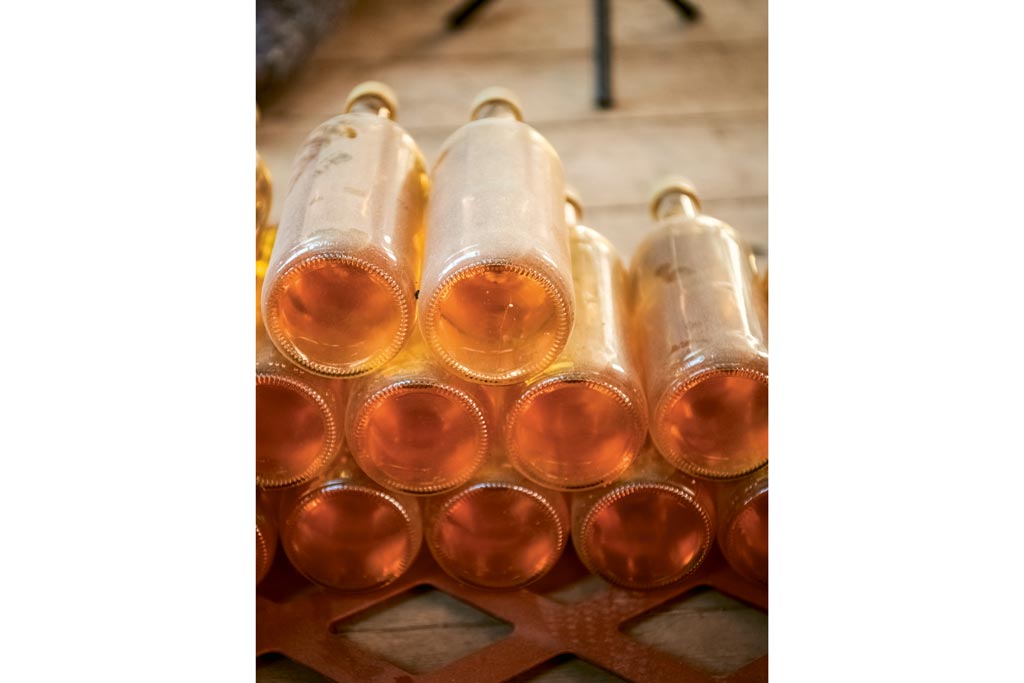A Guide To Fine Cider
The Fine Cider Company's Felix Nash on the comeback of cider
This post may contain affiliate links. Learn more
We’re familiar with the worlds of fine wine and craft beer, but what about fine cider? It’s a drink that often gets a bad reputation (cue memories of lukewarm cans at festivals), but there’s a new wave of natural cider emerging – one which promises to shake up all your preconceptions about the apple-based brew.
Meet Somerset-born Felix Nash, founder of The Fine Cider Company and author of the recently published Fine Cider. Here he gives us the lowdown on the modern cider movement, from the creation process to key regions to the best varieties to try…

Olivia Estebanez
What makes a ‘fine’ cider?
This is a hard thing to define – just as defining with constitutes ‘fine wine’ is – but there are some things to look out for, such as complexity, vibrancy and character. How a maker achieves these can be varied, but some elements that often crop up are: seasonal making, an awareness and use of specific apple varieties, and long, slow fermentations of the apple juice. Much of this might sound pretty obvious, but mass market cider legally only needs to be made from 35 per cent apple juice, and that 35 per cent can be from concentrate (from any apples, not just cider apples), the remaining 65 per cent can be water, and all sorts of other things. Plus, mass market cider is often not made seasonally and can be made in as little as a few weeks. As a comparison, if we made wine from grape juice concentrate and water, of course it wouldn’t even resemble the finest wines of the world.
Can you tell us a bit about the process of cider production?
Often people think of cider as like beer, but it’s more like wine: beer is brewed, but both cider and wine are made by fermenting fruit sugars into alcohol. Cider was once titled ‘The Native English Wine’ back in its 17th and 18th century heyday, when the finest ciders were drunk by the aristocracy from cider flutes. The process of making cider is very similar to wine making – press the fruit for the juice, and ferment it. But there’s one key difference between apples and grapes: grapes are fairly soft and can even be pressed with your feet, while apples are pretty strong, and the cider maker has to grind them up before pressing them. Ageing can be an important factor for the finest ciders: many of ours are three or more years old – I think the oldest cider we currently supply is from the 2013 season.

Olivia Estebanez
Which are the top cider producing regions around the world?
There is sort of an old world and new world in cider, again, as in wine. Britain, France and Spain have rich and long established cider cultures in certain regions, but the new wave of fine cider making is kicking off all over the world. The USA is leading the charge – as they did with craft beer – with cider growing there faster than anywhere else on the planet. But lots of nations are gaining their own cider cultures, with interesting things happening in Scandinavia, Eastern Europe, Canada, New Zealand, Australia and Japan.
Can you tell us about the different varieties of cider?
The first key thing to know is the difference between traditional and non-traditional cider apples. Traditional cider apples, used most in the West Country, make cider that is more like the red wine end of the cider spectrum: rich, full bodied, tannic and higher in alcohol. Non-traditional cider apples (the eating and dessert end of the apple spectrum), meanwhile, make cider that is more like the white wine end: lighter, often more acidic, low in tannins and lower in alcohol. Traditional cider apples are often grown in the West Country, where as the bulk of non-traditional cider apples are grown on the East side of the country.
If you’re deciding which cider to order at a pub, your best bet is to ask what they know about the cider they’re selling. If they can tell you things like how it’s made, the apples used and precisely where it comes from then it’ll most likely be more interesting than a super industrial cider. Provenance is key. But beyond that, ask for a taste!

Olivia Estebanez
Who are some of the key players in the fine cider world?
The godfather of the new wave of fine cider making has to be Tom Oliver (Oliver’s Cider and Perry). For decades he’s been elevating the finest Herefordshire cider, and he’s widely regarded as one of the best cider makers on the planet. Find & Foster is a good Devon maker, while Pilton Cider in Somerset makes some wonderfully succulent, naturally sweet ciders. Little Pomona in Herefordshire, and Starvecrow Cider in Sussex are also doing some really exciting cider making. If you like dessert wine you must try Ice Cider. Brannland Cider in Sweden makes some amazing ice ciders – they’re located less than 200 miles south of the Arctic Circle, which means they get to work with the natural cold of the Swedish winter.
Which foods pair best with cider?
Cider pairs well with so many foods, perhaps more than any other drink. The key principle for pairing cider with food is that acidity in the cider cuts through fats in the food. Everyone knows the classic of pork with cider, but anything with a fat content can pair well with the right cider – cider and cheese can be glorious, as well as creamy desserts, game and lamb. Cider can also go well with slightly spicy food as it dampens the heat, and it can add a nice fruity element to a salad or vegetable dish.
Fine Cider by Felix Nash, published by Dog ‘n’ Bone Books (£16.99). Photography © Dog ‘n’ Bone Books.
